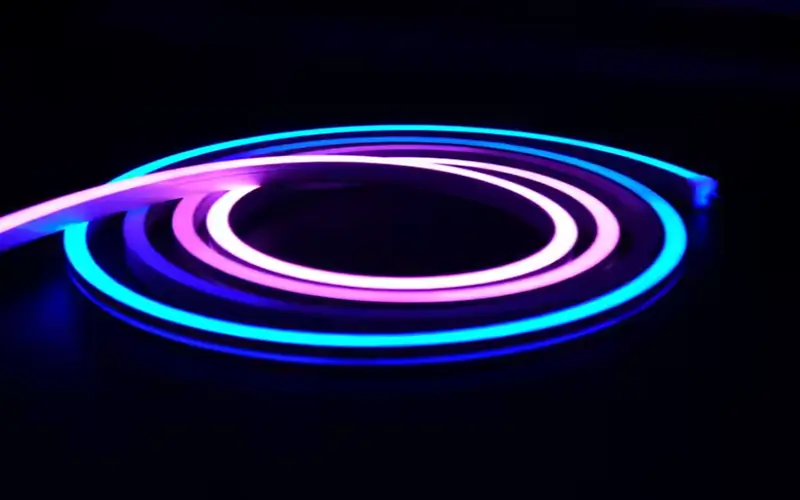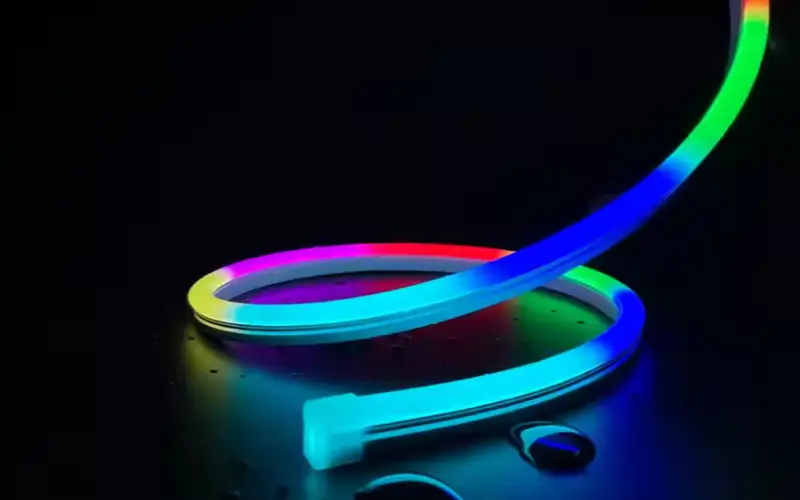
If you have been working with professional lighting systems, have you heard of the DMX512 lighting system? You have heard of the term DMX, but what does DMX stand for lighting? Why is it so important in lighting control? In this article, we will explore what DMX stand for in lighting, its protocol, lighting advantages, and future trends.
What Does DMX Stand for in Lighting?
DMX was originally developed in the 1980s and has slowly become the industry standard for connecting controllers and dimmers to lighting fixtures. It allows multiple lighting fixtures to be controlled from a single console, allowing for synchronized and coordinated lighting displays.
DMX stands for Digital Multiplexing and is a standard protocol for digital communication networks commonly used to control lighting and effects. It enables users to control a variety of parameters such as brightness, color, and motion. The protocol is essential for large venue lighting, entertainment lighting (including theatres, concerts, and clubs), and architectural lighting applications. About the DMX LED strip, pls read What are Addressable Digital LED Strips?
What is the DMX Protocol?
The DMX protocol (Digital Multiplex) stand for a standard communication protocol for controlling lighting and special effects equipment. It connects the controller to multiple devices via a single data line, allowing users to simultaneously control the brightness, color, and effects of multiple lights, lasers, and other devices. DMX is capable of transmitting up to 512 channels of data, making it widely used in stages, performances, and large-scale events.
In addition, this DMX protocol enables long-distance data transmission between devices. In a DMX system, data packets are sent from the controller to the lighting device, and each packet contains information about the desired lighting parameters, such as color, intensity, and movement.
DMX channels are assigned to control specific lighting parameters, and each channel is capable of transmitting values between 0 and 255. This allows precise control of lighting equipment, enabling the creation of dynamic and immersive light shows.
How Does DMX Work in Lighting Systems?
DMX works by transmitting packets of data from a controller to a lighting fixture over a DMX cable. The controller sends out signals corresponding to the desired lighting parameters, which are then interpreted by the lighting fixture and displayed accordingly.
In a typical DMX setup, a controller is connected to the DMX cable. This then splits into multiple branches, each connected to a lighting fixture. The controller sends out a signal to each fixture, and each fixture responds to the signal it receives. This allows for centralized control of multiple lighting fixtures, creating synchronized and coordinated lighting shows.
What are the Benefits of Using DMX in Lighting Control?
There are many advantages to using DMX in lighting control. It can connect the controller with multiple devices through a single data line, allowing users to control the brightness, color and effects of multiple lights, lasers and other devices at the same time.

Flexibility and Customization
DMX networks are chain-connected and can be flexibly laid out according to actual needs. DMX allows precise control of lighting parameters, enabling the creation of dynamic and customized lighting displays.
Compatibility
If you have purchased DMX lighting systems from different manufacturers, it can fully support DMX devices that can be seamlessly integrated into a single lighting system, ensuring compatibility and ease of use. It can be easily expanded to include other lighting equipment, which makes it suitable for large events and installations.
Multi-channel Control
DMX is able to control up to 512 channels simultaneously, allowing users to flexibly manage multiple lights and devices, suitable for complex lighting arrangements and large music venues. About the DMX RGB LED strip, pls check What are Addressable RGB LED Strip?
Reliability
DMX signals can be transmitted over long distances with minimal noise interference, ensuring reliable and consistent lighting control. In addition, it uses shielded twisted pair cables, DMX has strong resistance to interference and can operate stably in complex environments.
Long-distance transmission:
DMX signals can be transmitted within 1000 feet (about 300 meters), suitable for large-scale applications, and the signal remains stable during transmission.
Dynamic Effects
DMX supports a variety of dynamic effects, such as gradient, flashing and movement. You can also edit the program you want, creating a colorful visual experience and enhancing the audience’s sense of participation.
Comparing DMX to Other Lighting Control Protocols
DMX is currently the most widely used lighting control protocol. But there are other protocols available that we can compare. For example, DALI, Art-Net, and sACN. Each protocol has its own advantages and disadvantages, and DMX is known for its reliability, flexibility, and ease of use.
DALI (Digital Addressable Lighting Interface) is a standard protocol for lighting control. It also allows individual control of each luminaire, each with a unique address, supporting flexible lighting schemes. And supports bidirectional data transmission,
Mainly used in commercial and industrial lighting systems.
Art-Net offers faster transmission speeds and a higher number of channels, making it suitable for large-scale installations. However, it requires specialized equipment and can be more complicated to set up and install than DMX.
sACN is a newer protocol that provides similar functionality to DMX. But performance and scalability have been improved. Therefore, it is not as widely adopted as DMX. Another major problem is that it is not compatible with most lighting equipment.
How to Choose a DMX Device that Meets Your Needs?
When choosing a DMX device for your lighting system, there are several factors to consider to ensure that it meets your needs, including:
Compatibility: This is an important point. DMX is generally used with other lighting equipment, so make sure the DMX device is compatible with your lighting equipment and controller.
Number of channels: Consider the number of channels required to control the lighting equipment and choose a DMX device with the appropriate number of channels.
Transmission distance: DMX is indeed suitable for long-distance lighting. However, you also need to determine the distance between the controller and the lighting equipment and choose a DMX device with sufficient transmission distance.
Durability: DMX lighting is very durable, and you should also choose DMX equipment that is durable and can withstand the rigors of professional lighting use.
DMX and the Future Direction of Lighting Technology
As lighting technology continues to evolve, so too does DMX. One of the most exciting trends in DMX is its integration with other technologies such as audio, video, and automation systems. This makes the event experience more comprehensive and immersive, with lights, sound, and visuals working together in harmony.
The future of DMX lies in its ability to adapt to new technologies and meet the growing demands of modern lighting design. DMX will continue to play an important role in the lighting industry.
Conclusion
DMX is indeed an essential protocol in modern lighting systems, enabling precise and dynamic control of multiple lighting devices. Its reliability, flexibility, and ease of use make it a popular choice for professional lighting applications. Whether you are a lighting designer, event planner, or just interested in lighting technology, understanding the basics of DMX is essential to achieve the best lighting effects.
Do you need to buy DMX light strips and DMXLED neon tubes? Or if you have any questions about DMX lighting, you can communicate with us. We are LED light strip manufacturers.
